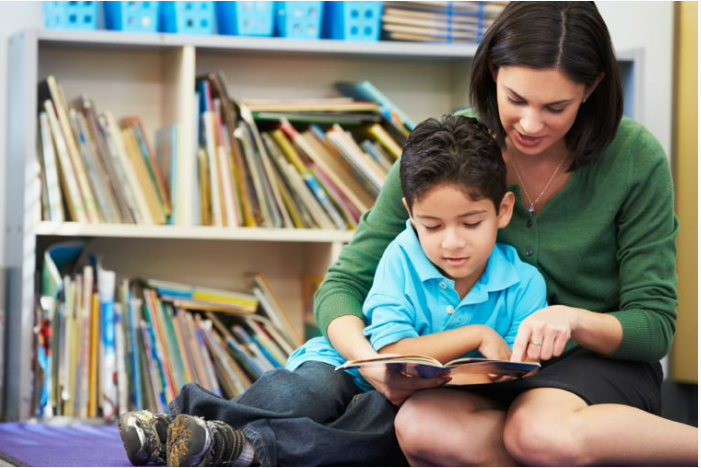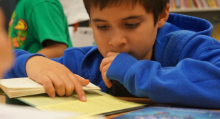Learning Reading and Writing the Right Way!

CrunchGrade many times sees how ESL (English as a Second Language) students struggle with learning reading and writing. Children whose first language is not English face a great challenge when it comes to literacy development. To support these young learners, CrunchGrade provides various resources that focus on developing reading and writing skills in a fun and engaging way.
Here are some unique ways of learning reading and writing that you can use to support your child’s literacy development:
1. Use Technology
One way to engage your child in reading and writing is by using technology. Various apps and websites help support your child’s literacy development. Some of our favourites include Reading Eggs, Starfall, and PBS Kids. These websites and apps provide interactive games and activities that help support your child’s literacy development in a fun way.
AI-based edutech platforms like CrunchGrade can also be used to support your child’s literacy development. Our platform provides personalized learning experiences that help children learn at their own pace. Such platforms assess the student’s current reading and writing level and then recommend lessons, activities and games that are appropriate for their level.
2. Make It Hands-On
Our CrunchGrade tutors make reading and writing more fun for your child by making them hands-on. They suggest parents help young kids develop their reading and writing skills by:
Using manipulatives such as:
- Magnetic letters to spell out words.
- Making words with playdough.
- Building words with blocks.
- Writing in shaving cream, sand, or salt trays.
Online, various games and activities make reading and writing more hands-on for your child.
Older kids learning English as a Second Language can also benefit from hands-on activities. For example, they can use post-it notes to label objects around the house in English or create a scavenger hunt where they have to find objects around the house that start with a certain letter.
3. Incorporate Music
Songs are a great way to help young children learn reading and writing. They can help kids remember words and their meanings. Songs can also be used to teach kids about phonemic awareness, phonics, and spelling. Many songs available online focus on teaching literacy skills. Some of our favourites include the Alphabet Song, BINGO, and Five Little Monkeys.
Older kids can also benefit from using songs to learn reading and writing. They can use songs like The ABC Song to learn about the alphabet and its order. They can also use songs to learn spelling rules, such as The E-I-E-I-O Song for learning about the long and short vowel sounds.
4. Choosing a Topic the Child is Interested In

When it comes to writing, it is important to encourage your child to write about topics that they are interested in. This will help them be more engaged in the writing process. It is also important to provide them with various writing prompts that will help them get started.
For example, if your child is interested in animals, you can provide them with prompts such as “Write a story about your favourite animal” or “Imagine you are an animal, what would your life be like?”.
5. Using the Knowledge of One Language to Learn Another One
For children who are learning English as a Second Language, it is important to use their knowledge of their first language to help them learn English. Students who speak aboriginal languages can use their knowledge of these languages to help them learn English.
For example, students who speak Dene can use their knowledge of the Dene language to help them learn English vocabulary related to the environment. By using their first language, students can make connections between the two languages, which can help them learn English more effectively.
6. Show Them How Much Fun Reading and Writing Can Be
One learns faster when he or she is enjoying what he or she is doing. Besides games, you can make reading and writing fun for your child by:
- Turning it into a family activity. For example, you can have a family reading night where everyone reads their favourite book aloud.
- Making it a competition. Siblings can compete for who can read the most words in a minute or who can write the best sentence. You can also have a spelling bee competition at home.
- Making it a reward. For example, you can let your child choose a book from the library as a reward for reading a certain number of books.
Get Professional Help
Tutors know how to help your child learn reading and writing based on their individual needs. They can provide them with the one-on-one attention that they need to succeed.
They can also identify your child’s strengths and weaknesses, and tailor their instruction accordingly. This is something that you might not be able to do on your own.
Learning to read and write takes time and practice. Don’t get discouraged if your child is not progressing as quickly as you would like. Just keep exposing them to literacy activities and they will eventually get there.
Find the best tutors from all across Australia – Sydney, Melbourne, Adelaide, Perth, Newcastle, Goldcoast, Canberra, Brisbane.
To make it easier for you to decide, your first session is completely FREE!
Select and book a tutor for Math, Science, English and all the other subjects.
